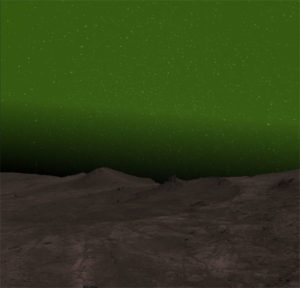A Mars probe has discovered that the Red Planet’s atmosphere glows green at night. Scientists have observed the night glow of Mars in the visible light spectrum for the first time, the European Space Agency reports.
According to the ESA, nightglow in particular “occurs when two oxygen atoms combine to form an oxygen molecule.”
On Mars, this occurs at an altitude of approximately 31 miles (50 km). By comparison, auroras occur when charged particles from the Sun collide with the Earth’s magnetic field.
Using the European Space Agency’s (ESA) ExoMars Trace Gas Orbiter (TGO), scientists have observed for the first time that Mars’ atmosphere glows green, in the visible light spectrum.
This effect is called airglow (either dayglow or nightglow, depending on the hour), and it is also observed on Earth. Although it bears some similarities to the northern lights (or aurora) here on our planet, it is a different phenomenon with different causes.
In particular, the green glow of the Earth’s atmosphere is characteristic of the phenomenon of “dust plasma”. Dusty plasma is an ionized gas containing tiny dust particles that are either introduced into the plasma from the outside or are formed spontaneously in it as a result of various processes. Dust plasma is often found in space and is also present in the earth’s ionosphere.





